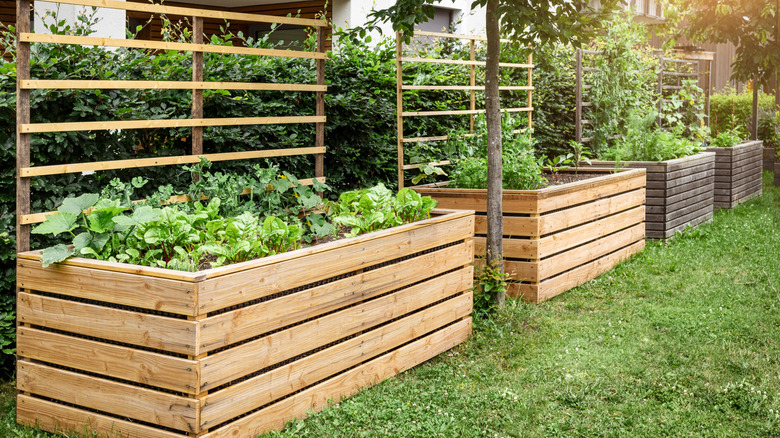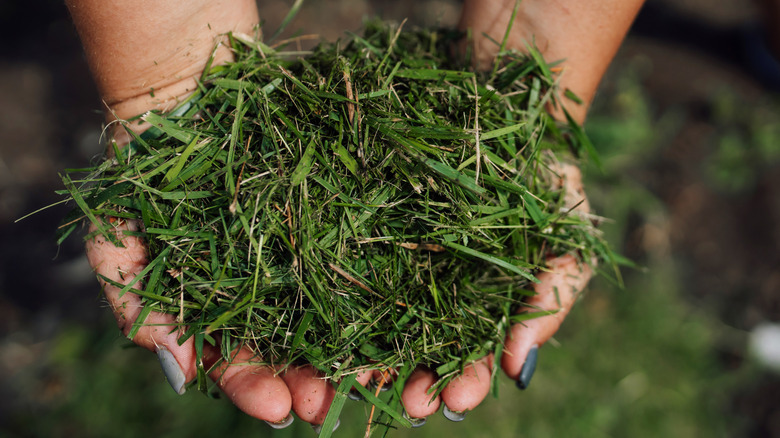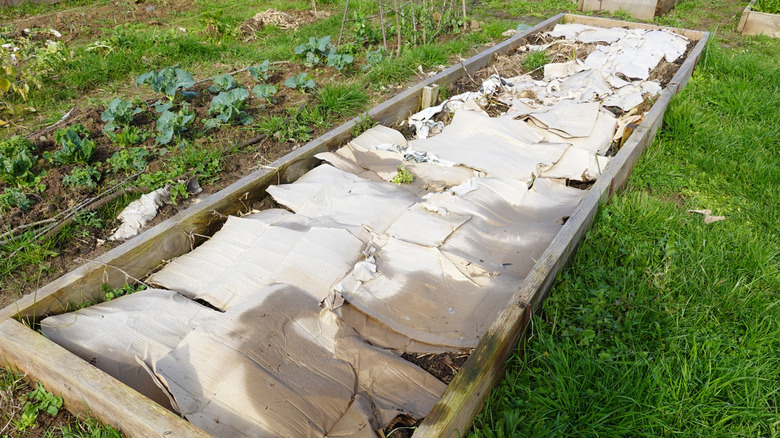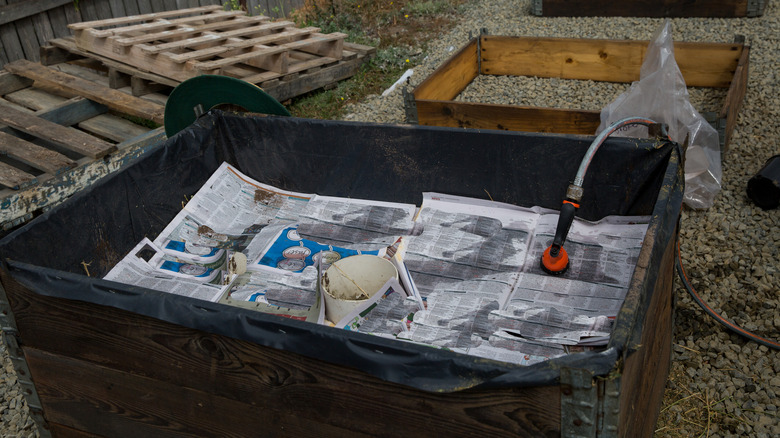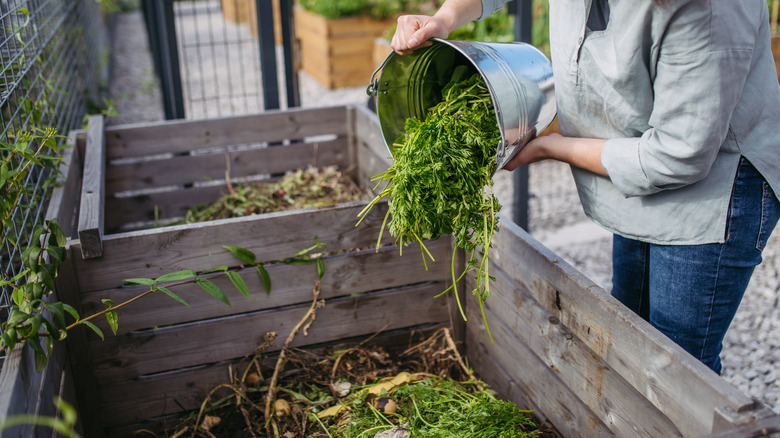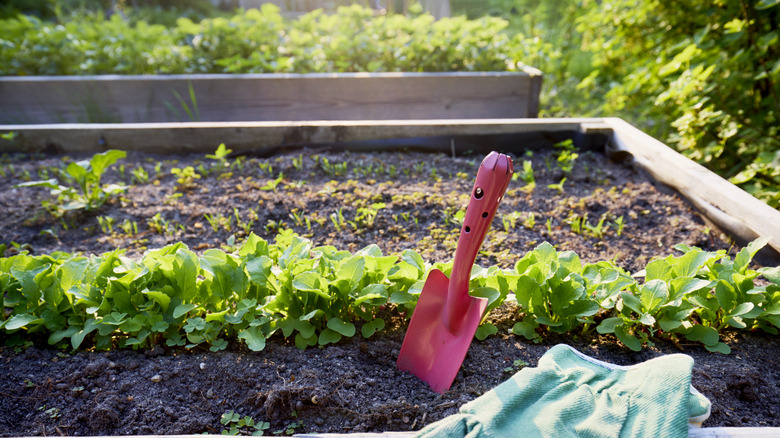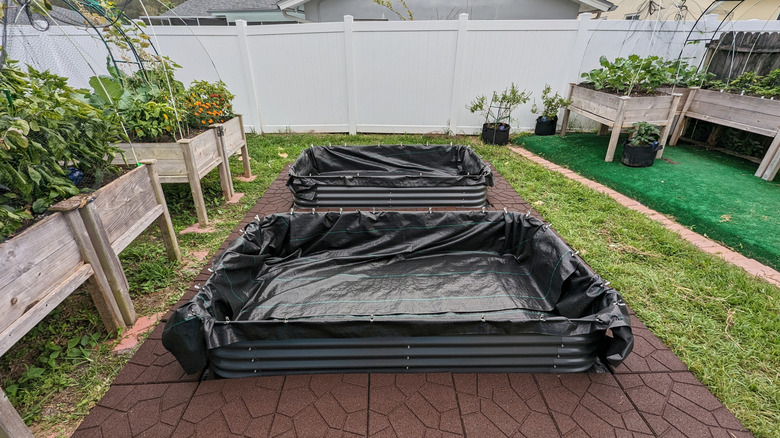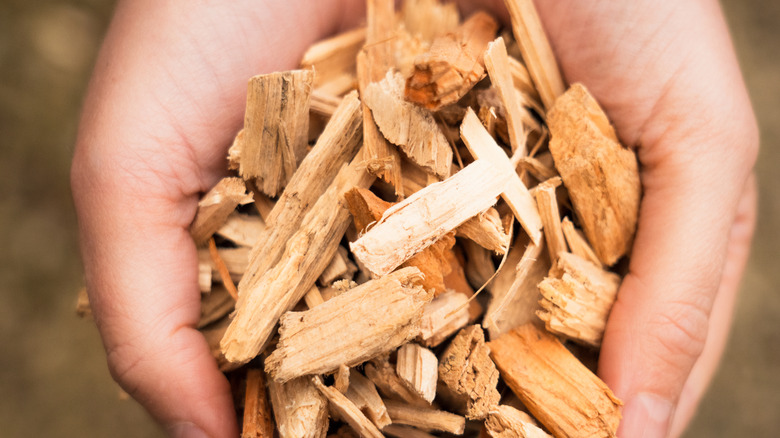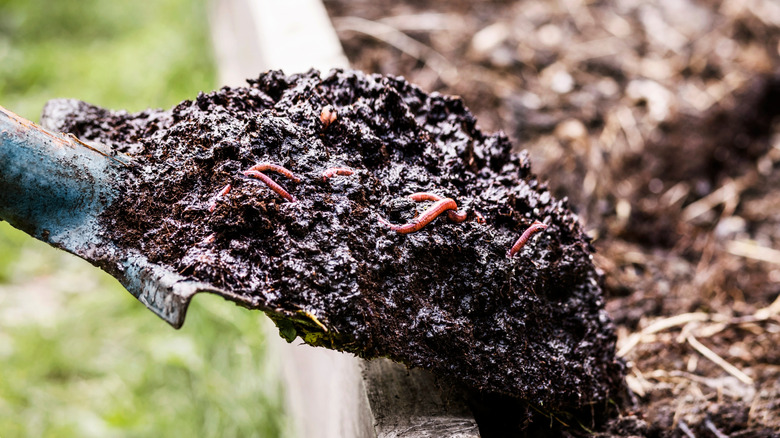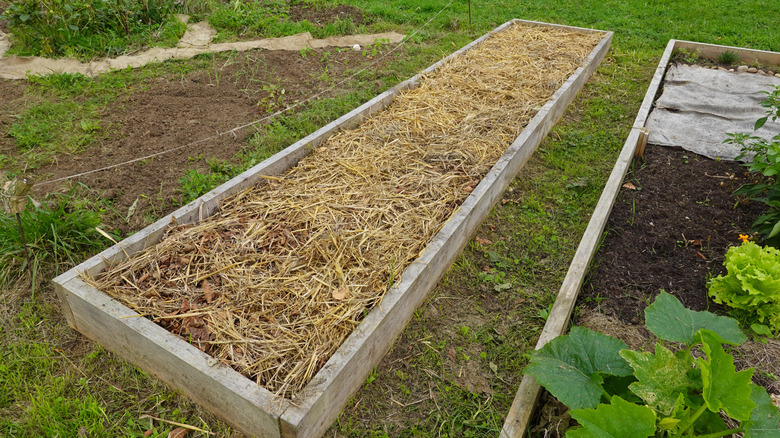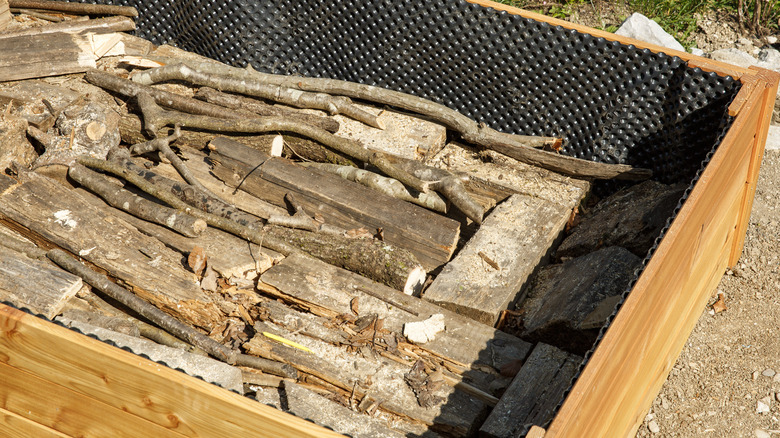The 10 Best Materials You Should Use To Fill A Raised Garden Bed
Raised beds offer a number of benefits. For one, the soil in them drains better. Just as importantly, raised beds make it physically easier to garden. However, growing plants in raised beds comes with some unique challenges. To fill the bed, you must buy fresh, expensive soil. As you water the plants there, the medium tends to dry out more rapidly. Raised garden beds are also prone to weeds, pests, and faster nutrient loss. The good news is that by filling the beds with the right materials and not just soil, you can avoid many of these issues. From grass clippings to cardboard and newspapers, there are several items you could use in the beds' composition, all of which have different benefits — from slowly releasing fertilizer to preventing weeds from cropping up.
Keep in mind as you read our lineup below that it's generally best to use a combination of these materials, not just one. The idea is to create a base layer of organic nutrients, while improving the soil structure and filling the space at the same time. As you'll see, placement is equally important, especially if you want to effectively suppress weeds in the beds.
Grass clippings
Grass clippings will release nutrients into the raised bed soil over time. Adding a layer of grass clippings on top of the garden bed will also act as a natural weed mat, as the blades of grass will kill off any weed seedlings that emerge by blocking their access to the sun. Grass clippings can even help the soil inside the garden bed retain moisture. So, be sure to save the clippings the next time you mow your lawn.
Cardboard
Cardboard can act as a great insulator when used to line the interior sides of the garden bed to keep the soil safe from winter frosts. As a top cover, cardboard can prevent weeds from growing, as it smothers the seedlings before they have a chance to mature. Eventually, the cardboard breaks down, in a process that adds nutrients to the medium and improves its drainage. Just make sure you use cardboard without gloss, plastic, ink, or tape on it.
Newspaper
Newspaper can be used at the top or bottom of a raised bed. Layered at the bottom, it will kill off any grass or weeds that may already be growing there (you'll want to lay down at least a few layers of newspaper). At the top, newspaper offers another way to prevent weeds from taking over the raised bed by keeping seedlings from sprouting. You might notice that newspaper helps the soil retain moisture when layered over the top of the raised garden bed.
Sticks and leaves
If you don't have much on hand to help you fill the bottom of your raised garden bed, sticks and leaves are a great bet. Sticks of different sizes will sit on top of each other, allowing the soil to aerate. Leaves will decompose quickly, providing loads of nutrients to the soil as they do. Leaves can even act as a partial weed barrier, especially if you layer them thickly on top of the garden bed.
Old soil from pots and planters
Soil is expensive, and the point of adding other items to a garden bed is to avoid the cost. Instead of filling your beds with brand new soil, you can reuse the old potting medium from your pots and planters. Just make sure the soil you're reusing only had healthy, pest-free plants growing in it in the past. Old soil with fungal spores or insect eggs could lead to infestations and disease outbreaks in the raised beds. If you're not sure, sterilize the old potting soil before adding it to the beds.
Landscape fabric
Consider adding landscape fabric at the very base of your garden beds. It can be a highly effective weed barrier because it doesn't decompose quickly. Don't worry, though — since you're applying it at the base of a contained garden bed and not burying it completely, it's still a safe and eco-friendly approach. However, there are some downsides to landscape fabric, and natural weed barriers are still more sustainable.
Wood chips
Using wood chips as mulch in your raised garden bed can help prevent weeds. What's more, they decompose relatively slowly (especially the larger ones), gradually adding organic matter to your soil and balancing out its nutrients and moisture. Additionally, wood chips are fantastic insulators that protect the raised beds from extreme heat and cold. Adding some wood chips to your raised bed growing medium could also help repel pests, as most insects dislike the smell of certain wood, like cedar.
Compost
Adding compost to a raised bed will provide the plants you grow there with a source of nutrition. The nutrients get released slowly as the microorganisms in the soil process the compost. Because this process takes time, don't rely on compost alone. To make sure your plants still get the elements and minerals they need, you should still fertilize them as needed. For the best results, compost should make up about 25% of the raised bed medium. Adding too much can have adverse effects on the quality of the growing medium and the health of the plants.
Straw
Layer straw on top of the raised bed soil as mulch. It will decompose over time, lending your soil small amounts of nutrients as it does. As a top layer, it's also great at blocking weeds from sprouting. The ideal time to apply straw to the top of your garden beds is in the fall. This way, the straw mulch will suppress cool-season weeds and help regulate the soil temperatures during the year's coldest months.
Pieces of wood
Some gardeners swear by the benefits Hügelkultur gardening affords their raised beds. The method involves layering large pieces of wood and logs on the base of your garden beds, then adding lots of organic matter like compost, grass, and leaves around it to help speed up the wood decomposition process. Large pieces of wood will quickly fill up extra space in a garden bed, and won't decompose as fast as other materials, keeping the bed sturdy throughout the year.
